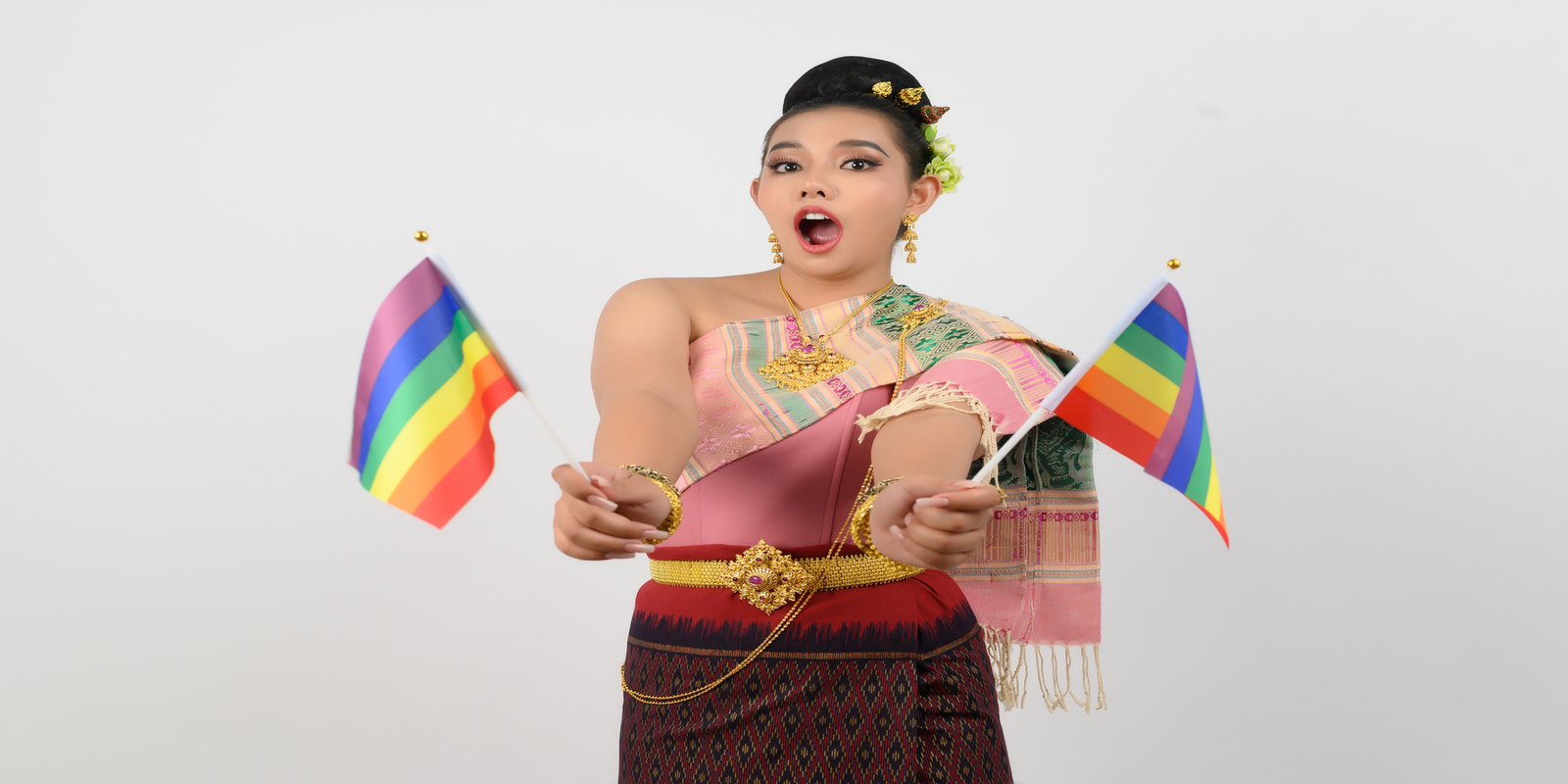Dating a Ladyboy: Understanding the Term and Its Cultural Significance
Dating a ladyboy means embracing a unique and beautiful experience, but understanding the term itself is essential. A ladyboy is a transgender woman, primarily from Southeast Asia, though cultural nuances shape the meaning.
The term “ladyboy” carries mixed perceptions. Some see it as a neutral descriptor, while others view it as outdated or even offensive. In countries like Thailand and the Philippines, ladyboys are widely recognized and accepted as part of the culture. However, in Western societies, the preferred term is “transgender woman.” When dating a ladyboy, using respectful language can make a significant difference in how your relationship develops.
It’s important to approach the term with cultural awareness. Some ladyboys embrace the label proudly, while others prefer different terminology. The best approach is to ask and respect individual preferences. Understanding this distinction helps create a more meaningful connection while avoiding unintentional offense.
How Do You Even Define a Ladyboy? Understanding Its Origins and Meaning
Dating a ladyboy requires an understanding of what the term actually means and where it comes from. The word “ladyboy” is an English translation of the Thai term “kathoey,” which refers to transgender women and sometimes effeminate gay men. While kathoeys have existed in Thailand for centuries, the exact origins of the term remain unclear. Some believe it gained prominence during the Vietnam War, when American soldiers in Thailand encountered kathoeys and coined an English equivalent.
Despite its long history, “ladyboy” is not universally accepted. In Thailand and other parts of Asia, it is generally seen as a neutral or even affectionate term. However, in Western cultures, many consider it outdated or offensive due to its association with stereotypes, pornography, and the oversexualization of transgender women. Some argue that it reduces a person’s identity to a label rather than acknowledging them as a woman.
Context plays a crucial role in how the term is perceived. Many ladyboys are comfortable with it in everyday speech, especially within Southeast Asia, where it was originally adopted to bridge language barriers with the West. However, using it respectfully and being mindful of preferences is essential when dating a ladyboy, as personal identity always comes first.

Ladyboys in Asian Countries: Cultural Differences and Terminology
Dating a ladyboy means understanding the cultural nuances that shape how transgender women are perceived across Asia. In Southeast Asia, the term “ladyboy” is widely recognized and often used alongside local terms. While it is commonly accepted in Thailand and the Philippines, other Asian countries have their own unique terminology that reflects cultural and historical differences.
In Japan, the term “new half” refers to transgender women, particularly those who have undergone gender-affirming surgery. Indonesia uses the word “waria,” a combination of “wanita” (woman) and “pria” (man), highlighting a distinct third-gender identity rather than strictly a transgender definition. India’s “hijras” form a well-established third-gender community with deep religious and cultural roots, often seen as spiritual figures despite facing social stigma. These identities, though similar to the Western concept of being transgender, carry unique historical and societal meanings that make direct translations difficult.
The variations in terminology reflect different attitudes and cultural beliefs about gender identity. In some places, transgender women are revered, while in others, they still struggle for social acceptance. When dating a ladyboy, being aware of these differences helps in fostering understanding and respect. Recognizing the diversity within Asia’s transgender communities ensures that relationships are built on appreciation rather than assumptions.
Ladyboys in Thailand: A Culture of Acceptance and Visibility – Dating a ladyboy
Dating a ladyboy in Thailand offers a unique experience, as the country is home to one of the largest and most visible transgender communities in the world. Often referred to as the “Land of Smiles,” Thailand is widely recognized for its cultural acceptance of kathoeys, or ladyboys, making it a place where transgender women can live more openly compared to many other countries.
Thai society’s tolerance stems from deep cultural and religious roots. Buddhism, the dominant religion, promotes compassion and acceptance, making it more open to gender diversity. Unlike in many Western nations, where transgender individuals often face significant societal barriers, Thailand’s Buddhist influence encourages a more nonjudgmental attitude. While challenges still exist, ladyboys in Thailand enjoy a level of visibility that is rare elsewhere.
Another contributing factor is the natural physical traits common among Thai people. Many Thai ladyboys have a naturally petite frame, clear skin, and delicate facial features, making gender transition and passing in society easier. This leads to broader social acceptance, as many ladyboys are seen as naturally blending into feminine beauty standards.
Despite some lingering discrimination, Thai families and businesses are generally more accepting. It is not uncommon for ladyboys to work in mainstream jobs, entertainment, and even high-profile industries. While legal recognition still has room for improvement, Thailand remains one of the most welcoming places in the world for transgender women.
Ladyboys in the Philippines: A Unique Blend of Tradition and Acceptance
Dating a ladyboy in the Philippines comes with a unique cultural dynamic. Despite being a predominantly Roman Catholic country, the Philippines is surprisingly tolerant toward the LGBTQ+ community, including transgender women. Unlike in many other Catholic-majority nations where traditional values often create strict gender norms, Filipino society has embraced gender diversity in ways that reflect its deep-rooted cultural and social fluidity.
The local terms for ladyboys in the Philippines are “bakla” and “bayot.” While both terms generally refer to effeminate men or transgender women, “bakla” is the more widely used term in everyday conversation. These identities have long been part of Filipino culture, with baklas often taking on roles as entertainers, beauty queens, and social influencers. Their strong presence in media and entertainment has helped normalize and celebrate their identity, making them a visible and accepted part of society.
Another reason Filipino ladyboys are highly active in the dating scene is their strong command of English and widespread internet access. Many ladyboys use dating platforms to connect with foreign partners, making it easy for those interested in dating a ladyboy to find potential matches. While challenges still exist, the Philippines remains one of the more accepting countries for transgender women in Asia.
Ladyboys in the Rest of the World: Perception and Misconceptions – Dating a ladyboy
Dating a ladyboy outside of Asia comes with a different set of challenges, as the term “ladyboy” is far less common and often misunderstood. In Western countries, such as the United States and much of Europe, the word is rarely used in everyday conversation and is more commonly associated with adult content rather than as a respectful identity label. This contrast highlights the cultural differences in how transgender women are perceived globally.
In the West, there is a strong distinction between gay men and transgender women, with terms like “transgender woman” or “trans woman” being the accepted and preferred descriptors. The term “ladyboy” is often seen as outdated or offensive, as it can imply that a trans woman is not fully recognized as female. Additionally, because of its association with pornography, it can carry negative connotations that reduce a person’s identity to a fetishized category rather than a legitimate gender identity.
In many Western societies, calling a transgender woman a ladyboy can be taken as an insult, suggesting that she is not truly a woman or implying involvement in sex work. This is why it’s important to be mindful of language when dating a ladyboy, especially outside of Asia. Understanding and respecting cultural differences in terminology can help foster meaningful relationships built on genuine appreciation rather than misconceptions.

Meeting Up and the Ladyboy Dating Scene: Where and How to Connect
Dating a ladyboy can be an exciting and meaningful experience, but knowing where to meet genuine partners is key. While there are transgender communities worldwide, the most vibrant ladyboy dating scenes are still in Southeast Asia, particularly Thailand and the Philippines. These countries offer a more open and socially accepted environment for ladyboys, making it easier to meet them in everyday life, social settings, and dedicated dating platforms.
In Western countries such as Canada, the UK, the US, and Australia, ladyboys are present but less concentrated. They are often part of immigrant communities and may not be as visible as they are in their home countries. Meeting ladyboys in these regions typically happens through dating apps, social media, or LGBTQ+ events rather than casual encounters in public spaces. While this makes dating a ladyboy outside of Asia more challenging, it also allows for more serious and meaningful connections, as many ladyboys living in the West are looking for long-term relationships.
For those seeking to meet ladyboys in Asia, it is important to approach the experience with awareness. While there are many genuine and respectful dating opportunities, some areas, especially nightlife districts, can attract individuals involved in sex work or scams. If you are meeting someone for the first time, always choose a public location and exercise the same caution you would in any dating scenario. Real ladyboys are everyday people with regular jobs and responsibilities, and they are not simply waiting around for foreign men to approach them.


You must be logged in to post a comment.